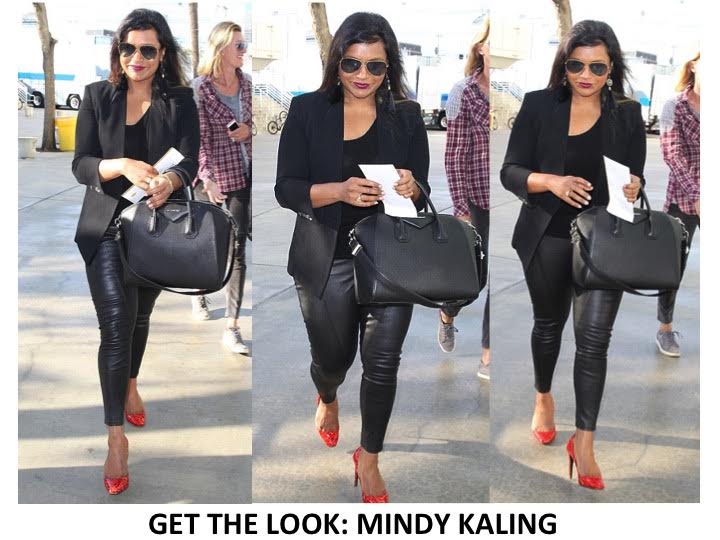
Everyone’s favorite funny girl is also quite the fashion icon. Mindy Kaling is a role model in so many ways; she’s smart, sassy, sexy and proves that curves are chic and should be worn with pride! This brown girl doesn’t mess around when it comes to style and we love the bold risks she takes on and off the red carpet.
We’ve broken down one of our favorite looks, so you can shop Mindy’s style, no matter what your budget is!
[Read Related: 5 Confidence-Booster Pieces You Need in Your Closet Now]

All hail the queen. Mindy’s outfit here is perfect for work, cocktails or even date night. She pairs edgy pieces with classic details for a trendy yet contemporary ensemble. To get her look, start with a black boyfriend blazer, similar here and here. Pair with a loose-fitting black tee shirt-like this one. And now for those leather leggings! A closet staple that you’ll be putting on repeat for years to come.
And the best part is, they are flattering on every figure type. For a wallet and eco-friendly version, check out these faux leather leggings. If you’re in the mood to burn some dollas, we are obsessed with these luxe ones.
[Read Related: What to Wear for Weekend Brunch]
Don’t forget about the accessories! Red pumps are every girl’s BFF. They exude power, class, and overall fierceness. We love these, and these too.
Our girl Mindy certainly loves to splurge on iconic designer pieces, like her Givenchy Antigona handbag and we can’t blame her! That bag is everything right now. But if it’s a little (or a lot) out of your price range, opt for a similar stylish satchel like this one.
And finally, finish off the look with some glam, gold-rimmed aviators like these.
There you have it—boss lady status in no time.
[Complete the Look: Tarte Amazonian Clay Matte Waterproof Bronzer]
[All photos are courtesy of Dress for the Day]
 DRESS FOR THE DAY (DFTD) DFTD is a fashion website and mobile app designed to help men and women figure out what to wear everyday and for specific events based on your personal style, weather, and budget. Follow them on Instagram, Facebook and Twitter.
DRESS FOR THE DAY (DFTD) DFTD is a fashion website and mobile app designed to help men and women figure out what to wear everyday and for specific events based on your personal style, weather, and budget. Follow them on Instagram, Facebook and Twitter.




